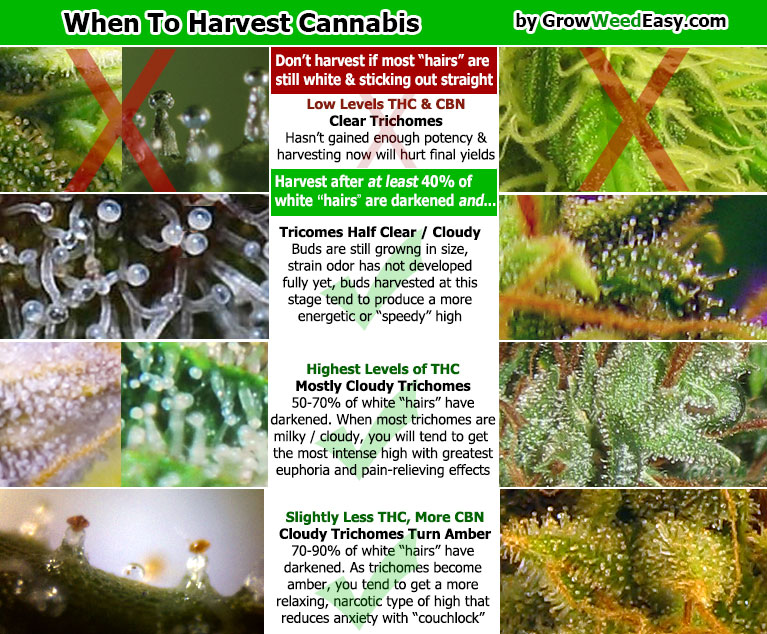
Trichome color is the most direct indicator of harvest readiness, signaling the optimal potency and effect profile
.
Brix level, which measures the sugar content in a plant's sap, is a general indicator of overall plant health that is not used to determine harvest timing.
Trichome color and harvest timing
Trichomes are the tiny, mushroom-shaped resin glands that cover cannabis buds and produce cannabinoids and terpenes. Their color change is a crucial visual cue for growers to determine the best time to harvest, depending on the desired outcome.
Clear trichomes
Appearance: Transparent and glassy.
Readiness: Too early for harvest. Cannabinoids and terpenes are not fully developed, so potency is low.
Effect: Harvesting at this stage typically produces a low-potency, more energetic, or "heady" high that can feel racy or anxious.
Cloudy or milky trichomes
Appearance: Opaque and milky white.
Readiness: Peak harvest time for maximum potency. THC levels are at their highest and the terpene profile is fully developed.
Effect: Provides the strongest and most psychoactive experience. This is the ideal harvest time for most growers seeking a potent, well-rounded high.
Amber trichomes
Appearance: The cloudy trichomes turn a golden or amber color.
Readiness: Later harvest. As trichomes turn amber, THC begins to degrade into cannabinol (CBN).
Effect: Increases the sedative, relaxing, and "couch-lock" effects. A later harvest is often preferred for medicinal users or those seeking a heavy, body-focused high.
Harvesting strategy
Most growers aim for a mix of cloudy and amber trichomes, often harvesting when the ratio is 70% cloudy to 30% amber, to achieve a balance of potency and relaxation.
Brix level and plant health
Brix is a measurement of the total dissolved solids, primarily sugar, in a plant's sap. It is measured with a refractometer using a drop of sap from a leaf.
Brix's role: A high Brix level (above 12%) is a sign of a healthy, vigorous plant with an efficient metabolism and strong immune system. This makes the plant more resistant to pests and disease.
Indicator of problems: Low Brix levels (below 12%) can indicate an underlying issue with nutrition, lighting, or watering.
No link to harvest timing: While high Brix is desirable throughout the plant's life, it does not directly correlate with the color of the trichomes or indicate harvest readiness. It is a health metric, not a maturity metric.
Indirect effects: A healthy plant with a consistently high Brix level is more likely to reach its genetic potential for cannabinoid and terpene production, which ultimately impacts the quality of the final harvest.
 = new reply since forum marked as read
= new reply since forum marked as read
